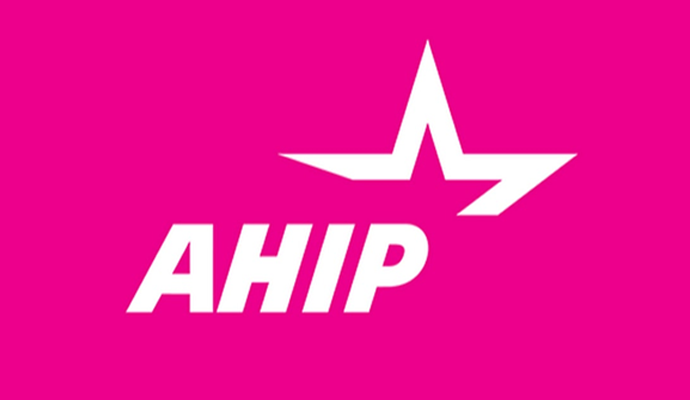Managed Care Organizations Lead to 27% Lower Prescription Costs
AHIP data shows that managed care organizations can control Medicaid prescription drug spending more effectively than Medicaid fee-for-service programs.

Source: AHIP
- Managed care organizations are providing Medicaid programs with lower cost prescription drugs, resulting in as much as $6.5 billion in net savings in fiscal year 2018, according to a recent report by America’s Health Insurance Plans (AHIP).
AHIP has long been a supporter of managed care organizations as a strategy for lower costs in Medicaid. The group grounded its legal fight against the health insurance tax largely by arguing that it would damage Medicaid managed care organizations financially.
In partnership with The Menges Group, a research firm, AHIP investigated prescription drug pricing and savings trends for managed care organizations in comparison to fee-for-service programs.
“While people with Medicaid are protected from the high costs of many prescription drugs, the cost of covering drug benefits for Medicaid participants has increased significantly in recent years, due largely to the rising cost of specialty and generic drugs,” AHIP explained.
Medicaid plans have begun to shift from fee-for-service to managed care organization, meaning prescription drug order volume under either model has changed over the years..
READ MORE: AHIP Lobbies for Medicaid Managed Care Orgs, Alzheimer’s Patients
The volume of prescriptions ordered under managed care organizations was over 2.5 times higher in 2018 than it was in 2011. Meanwhile, prescription order volume for fee-for-service plans in 2018 dwindled to nearly a third of its 2013 demand.
If those figures were flipped, the healthcare industry would be deeply troubled. Even with this drop in volume, fee-for-service programs saw their average post-rebate prescription costs increase 36 percent from $35.70 in 2013 to $48.46 in 2018).
In contrast, while managed care post-rebate prescription costs also grew, their prices were nowhere near the rate of fee-for-service programs. Managed care organizations’ costs grew 13 percent more slowly.
In 2018, managed care organizations’ prescription drug pricing still had not matched the fee-for-service 2013 level at $35.70. Over the course of five years, managed care organizations saw 23 percent growth in post-rebate prescription costs, rising from $27.96 in 2013 to $35.32 in 2018.
Managed care organizations can pull off these savings largely due to their preference for generics, AHIP stated. These organizations are superior to fee-for-service programs in their ability to motivate patients and prescribers to choose far less costly generics over brand name drugs, like payers that create formularies of low-priced generic drugs.
READ MORE: Stakeholder Communication Key for Shift to Medicaid Managed Care
Medicaid managed care organizations were four percent more likely to use generics from 2013 to 2018 than fee-for-service programs were. While both types of Medicaid programs increased their usage from the beginning to the end of the study, Medicaid managed care organizations were committed to generics since 2013.
The advantages of a managed care organization are most acutely felt through the practice of “carve-outs,” like those used in Michigan, the study indicated.
“Some states exclude or ‘carve-out’ selected high-cost populations or certain high-cost drugs, such as curative hepatitis C drugs, from their MCO prescription drug programs,” AHIP explained. “In comparing drug expenditures between MCOs and FFS programs at the national aggregate level, states with carve outs had significantly higher cost increases than those without carve outs.”
When comparing a collection of states with carve-outs (Group A) to states that carved out but then reintroduced certain prescription drugs (Group B), the former had post-rebate prescription costs 14 percent higher than those of those that reintroduced the drugs.
Additionally, Group B states increased generics dispensation by 15.6 percent between 2011 and 2018, exactly double the percent increase for Group A.
READ MORE: Centene-WellCare Merger Alters GA Medicaid Managed Care Landscape
Finally, whereas Group B saw only a 0.4 percent increase in net prescription costs, Group A saw over an 18 percent spike in net prescription costs. The Menges Group, which conducted AHIP’s study, suggested that the number could even be closer to 25 percent.
“The data are clear,” AHIP concluded. “By working together with the public sector, MCOs are delivering people with Medicaid the prescription drug coverage they need, at the right price, and saving states billions of dollars.”
The state of Michigan recently debated this very issue as it determined whether to streamline its prescription plan to a single formulary and institute a fee-for-service model.
“MDHHS contracts with capitated managed care plans to provide services for its beneficiaries. These plans are responsible for most pharmacy services. Selected drugs and classes are carved out from the managed care plan coverage and are paid directly to a pharmacy by the MDHHS fee-for-service program,” Michigan’s Medicaid Health Plan Common Formulary plan detailed.
Michigan payers allied against the proposal due to the potential effects on drug prices. The plans cited a previous administration which initiated a proposal but ultimately backed down from it.
“This carve out was considered by Governor Snyder’s administration, and rejected after the department leadership at the time reviewed the policy more deeply and came to realize that there were no savings – costs would have gone up – and patients would have suffered from the lack of a managed overview of their prescriptions,” Dominick Pallone, executive director of Michigan Association of Health Plans (MAHP), told HealthPayerIntelligence.com in a written statement at the time. “Recent studies in other states have only verified that finding.”
